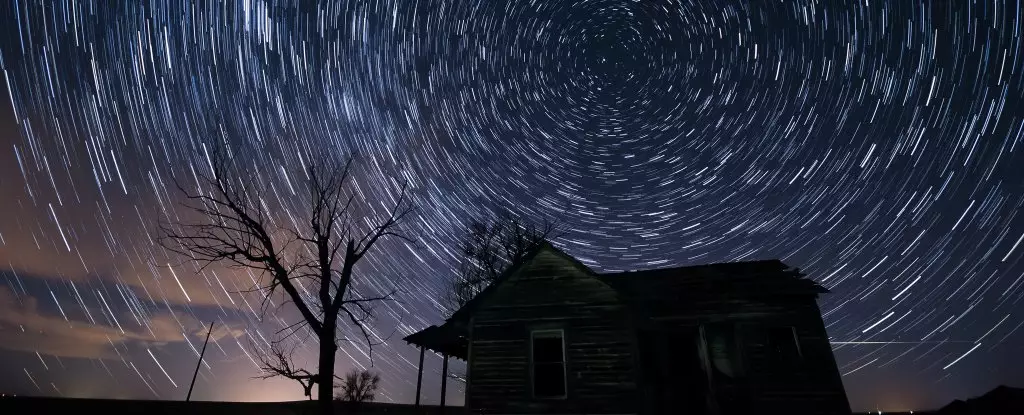As we step into the new year, 2025 promises to be an enthralling time for skywatching enthusiasts eager to connect with the celestial wonders of winter. The first weekend of January brings with it a unique collection of astronomical events, including the Quadrantid meteor shower, an extraordinary January ‘SuperSun’, and an occultation of Saturn by the Moon. These happenings offer not only a visual feast for observers, but also a reminder of the intricate tapestry of our universe.
Kicking off the year, the Quadrantid meteor shower is scheduled to peak on January 4th, exhibiting a Zenithal Hourly Rate (ZHR) of 80 meteors per hour. This makes it one of the most prolific meteor showers visible during the winter months. Notably, observers will be blessed with a 27% illuminated waxing crescent Moon, which will not interfere with viewing conditions. This combination heralds an excellent opportunity to catch a glimpse of these bright and fast meteors streaking across the night sky.
The Quadrantids are somewhat unique among meteor showers for their origin—tracing back to asteroid 2003 EH1. Unlike the more common sources that involve comets, asteroids are a rarity in meteor shower phenomena. This peculiarity adds an additional layer of intrigue for enthusiasts reflecting on the composition of our solar system. Historically, the meteor shower is named after the now-defunct constellation Quadrans Muralis, a designation that evokes curiosity and leads us to ponder the evolution of our night sky.
Observers should target the early mornings of January 3rd and 4th to optimize their chances of witnessing the shower. The peak activity is expected between 15:00 to 18:00 Universal Time on January 3, favoring regions in the northern Pacific. However, for skywatching in North America and Europe, the mornings of January 3rd and 4th will still yield remarkable sights, as the tail end of the peak may linger longer than anticipated. The chill of early January might discourage some, yet it is a small price to pay for the wonder of nature’s fireworks display.
Adding to the excitement of the Quadrantids, a pivotal moment unfolds with the Moon’s occultation of Saturn on January 4th at approximately 17:24 UT. Skywatchers in Europe will have the prime vantage point to witness the spectacle as the Moon, illuminated at 25%, gracefully passes in front of the ringed planet. The sight of Saturn seemingly disappearing behind the Moon offers a stunning perspective, creating a sense of the endless dance of celestial bodies in our universe.
The rings of Saturn, with a diameter that makes it one of the most visually identifiable planets, will play a significant role in this event. The entire occultation will take around 45 seconds to a minute, allowing ample time for observers to marvel at this breathtaking astronomical choreography. Such events are rare and serve as a reminder of the dynamic nature of the cosmos, where time and space converge in unexpected ways.
For those unable to experience the event in person, the International Occultation Timing Association details ingress and egress times, ensuring that no one misses out on future opportunities. In fact, this will be the first of two occultations featuring Saturn in 2025, with the next occurring on February 1st, enhancing the anticipation for astronomers and stargazers alike.
While the first weekend of January is filled with these mesmerizing events, the celestial landscape will continue to evolve throughout the month. The Moon will concertedly make its presence known as it joins a parade of planets, including close encounters with Venus and later with Jupiter and Mars. Each night sky will offer a distinctive canvas for exploration and reflection.
Moreover, January 4th signifies not just an occultation or a prolific meteor shower, but also marks the Earth’s perihelion—its closest proximity to the Sun—at approximately 0.98333 Astronomical Units. This moment highlights the complex interplay of our planet’s orbit and the natural cycles that affect the seasons. Irrespective of location, the annual turnover into a new year provides numerous avenues to explore our universe, cultivate curiosity, and strengthen our appreciation for the marvels of astronomy.
As we embrace the cold crispness of winter and the wealth of celestial events awaiting us, it is essential to tune in to the rhythms of the night sky. Whether you’re bundled up under blankets or gathering with fellow enthusiasts, the universe extends an invitation to marvel at its wonders. This January, the cosmos is not simply overhead but alive with activities that inspire unity and wonder—for it is in these shared moments of awe that we learn about our place in the universe. So grab your binoculars, prepare your thermoses of hot beverages, and let 2025 be a year filled with rich explorations of the heavens above.


Leave a Reply